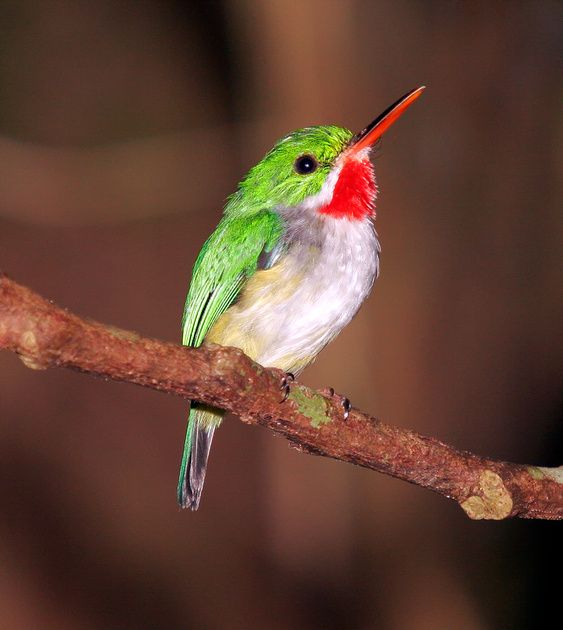The northern flicker (Colaptes auratus) or common flicker is a medium-sized bird of the woodpecker family. It is native to most of North America, parts of Central America, Cuba, and the Cayman Islands, and is one of the few woodpecker species that migrate. The northern flicker is a large brown woodpecker. It has a white tail with black bars and a black tip, a light brown to off-white breast with black to brown spots. it has a black “bib” on its upper chest. Males have a black or red “mustache” that runs from its bill down to its cheek. Larger than a robin, it measures 12 to 14 inches. Its wingspan can reach 18 to 21 inches. The flickers feet are short with two toes in front and two toes behind. Northern Flickers don’t act like typical woodpeckers. They mainly forage on the ground, sometimes among sparrows and blackbirds. When flushed, flickers often perch erect on thin horizontal branches rather than hitching up or around a tree trunk. Look for Northern Flickers in woodlands, forest edges, and open fields with scattered trees, as well as city parks and suburbs. In the western mountains they occur in most forest types, including burned forests, all the way up to treeline. Northern Flickers eat mainly insects, especially ants and beetles that they gather from the ground. They also eat fruits and seeds, especially in winter. Flickers often go after ants underground (where the nutritious larvae live), hammering at the soil the way other woodpeckers drill into wood. Young in the nest are vulnerable to nest predators such as raccoons, squirrels, and snakes. Once they reach adulthood, northern flickers are preyed upon by several birds of prey that specialize on hunting birds. In eastern North America this includes Cooper’s hawks and sharp-shinned hawks. Northern Flickers make a loud, rolling rattle with a piercing tone that rises and falls in volume several times. The song lasts 7 or 8 seconds and is quite similar to the call of the Pileated Woodpecker. You’ll hear it in the spring and early summer, while pairs are forming and birds are establishing their territories. Flickers make a loud single-note call, often sounding like kyeer, about a half-second long. When birds are close together and displaying they may make a quiet, rhythmic wick-a, wick-a call. Male and female Northern Flickers make a loud, evenly spaced, rapid drumming sound by hammering against trees or metal objects. You can often see a drumming bird pause, move its head just an inch or so away, and then begin drumming again with a very different quality of sound. Flicker drumming lasts about a second, during which the bird strikes the tree around 25 times. Drumming in woodpeckers takes the place of singing in songbirds. Here is a link so you can listen to this bird too.
Dots
…………………………………………………………………………………………………………………………………………………….
You just said a slur in braille





